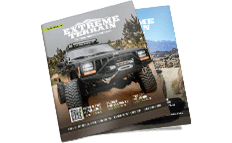Understanding 2007 Nissan Frontier Accessories and Parts
Engine and Transmission Components
When dealing with 2007 Nissan Frontier accessories and parts, a wide range of components is involved, each designed with specific functions, material compositions, fabrication methods, quality benchmarks, compatibility specifics, and performance features. Critical parts such as the engine and transmission are metal assemblies requiring a high degree of precision manufacturing, composed predominantly of high-strength steel alloys and aluminum.
Replacement Parts
Replacement parts should adhere to exact specifications to maintain optimal engine efficiency, ensuring compatibility with other related parts and systems that can influence overall vehicle performance.
Suspension Components and Brake Systems
Vehicle age, mileage, operating conditions, and maintenance history significantly influence the state of parts such as suspension components and brake systems. Choosing quality aftermarket parts that meet or exceed original equipment (OE) specifications ensures the maintained handling, comfort, and braking performance of your Frontier over its service life.
Exterior Parts
The vehicle's exterior parts, such as body panels and bumpers, mostly produced from robust materials like steel or plastic composites, succumb to the impact, corrosion, or discoloration over time due to exposure to harsh climatic conditions.
Electrical Components
Manufacturing techniques for electrical components require precision and strict quality control, as even minor defects can lead to a complete system failure. Therefore, it's critical to purchase parts from reputable aftermarket providers who conduct exhaustive testing and abide by rigorous OE standards.
Consumables
Furthermore, consumables like oil filters, air filters, fuel filters, and timing belts play pivotal roles in vehicle health. These usually crafted from synthetic fibers, paper, or rubber, require regular replacements due to clogging or deterioration.
Performance Enhancements
Performance enhancements for power, handling, or fuel efficiency often involve replacing or augmenting a variety of parts and systems - tires for improved traction, exhaust systems for increased horsepower, and cold air intake systems for better engine efficiency are common examples. Undoubtedly, the understanding of the different categories of automotive parts together with their roles, components, manufacturing specifics, quality standards, compatibility particulars, and performance attributes is key to making informed purchasing, installation, and upkeep decisions. Knowledge is indispensable when it comes to dealing with aftermarket automotive parts.

















